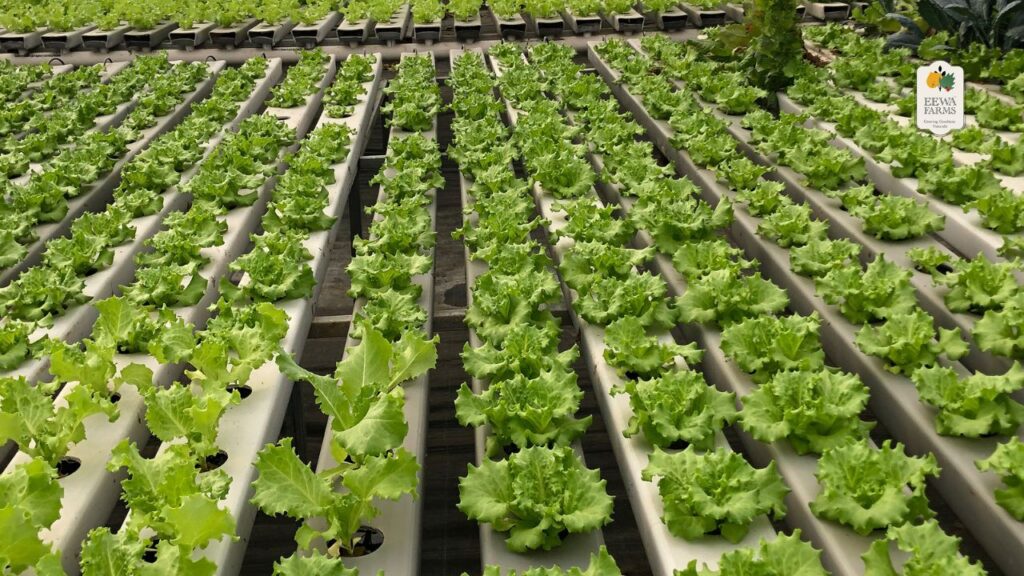17 Pros & Cons of Hydroponic Farming: A Comprehensive Guide

What is Hydroponic Farming?
Hydroponic farming is an innovative method of growing plants without soil, using a water-based nutrient solution to deliver essential minerals directly to the plant roots. This technique, known as soilless agriculture or water-based cultivation, offers precise control over the growing environment, leading to numerous advantages and some challenges. By understanding the full potential and limitations of hydroponic farming, one can make informed decisions about its implementation and benefits.
Pros of Hydroponic Farming
Higher Crop Yields
Hydroponic farming is known for producing higher crop yields compared to traditional soil-based farming. This increased productivity is due to several factors. Firstly, hydroponic systems provide an ideal environment for plant growth, ensuring a continuous supply of nutrients, water, and oxygen. This leads to healthier and more vigorous plants. Additionally, hydroponic systems enable year-round harvesting by eliminating the constraints of seasonal changes and adverse weather conditions. With climate control systems in place, farmers can grow crops continuously, resulting in a steady supply of fresh produce throughout the year. Moreover, plants in hydroponic systems tend to grow faster due to efficient nutrient uptake and the absence of soil-borne diseases and pests, further enhancing productivity.
Water Conservation
One of the most significant advantages of hydroponic farming is its efficient use of water. Traditional soil-based agriculture can be highly water-intensive, with significant amounts of water lost to evaporation, runoff, and inefficient irrigation practices. In contrast, hydroponic systems use significantly less water by delivering it directly to the plant roots. Many hydroponic systems are designed to recirculate water, collecting, filtering, and reusing nutrient-rich water to minimize waste. This efficient irrigation method ensures that plants receive the exact amount of water they need, greatly reducing overall water consumption. As a result, hydroponic farming is an excellent option for regions with limited water resources.
Space Efficiency
Hydroponic farming excels in utilizing space efficiently, making it ideal for urban environments and areas with limited land availability. Vertical farming, a popular application of hydroponic systems, allows plants to be grown in vertically stacked layers. This maximizes the use of available space, enabling farmers to produce more crops in a smaller footprint. Urban agriculture also benefits from hydroponic systems, as they can be set up in greenhouses, rooftops, and even indoors. This adaptability makes hydroponic farming a practical solution for local food production in densely populated areas. Furthermore, hydroponic systems can be scaled to fit various sizes, from small home gardens to large commercial operations, making them accessible for hobbyists and small-scale farmers alike.
Reduced Pesticide Use
The controlled environment of hydroponic systems offers significant advantages in pest management. Growing plants indoors or in greenhouses provides a barrier against many pests and diseases that affect outdoor crops. The absence of soil eliminates soil-borne pests and pathogens, reducing the need for chemical pesticides. As a result, hydroponic farming can more easily adopt organic farming practices, producing healthier and pesticide-free crops. This reduction in pesticide use not only benefits the environment but also results in safer, healthier produce for consumers.
Year-Round Production
Hydroponic farming ensures a consistent supply of crops throughout the year, regardless of seasonal changes or weather conditions. Indoor hydroponic systems utilize climate control to maintain optimal temperature, humidity, and light levels, creating a stable environment for plant growth. This protection from extreme weather events, such as droughts, floods, and frosts, ensures that crops are not affected by external factors that can devastate traditional soil-based farming. The ability to produce crops year-round ensures a steady supply of fresh produce, reducing reliance on seasonal imports and improving food security.
Faster Growth Rates
Hydroponic systems promote faster plant growth through optimized growing conditions. Plants receive a constant and balanced supply of nutrients directly to their roots, promoting rapid and healthy growth. The controlled environment of hydroponic systems provides ideal conditions, including optimal light, temperature, and humidity, allowing plants to thrive. This combination of efficient nutrient uptake and ideal growing conditions results in accelerated plant development and shorter production cycles. Faster growth rates lead to more frequent harvests, increasing overall productivity and profitability for farmers.
Precise Nutrient Control
One of the key advantages of hydroponic farming is the ability to precisely control plant nutrition. Hydroponic systems allow farmers to tailor nutrient solutions to meet the specific needs of different crops, ensuring that plants receive the exact nutrients they require at each growth stage. This precise control over nutrient delivery leads to healthier plants with improved growth and development. By providing the right balance of nutrients, hydroponic systems can produce higher-quality crops with better taste, color, and nutritional content. Precise nutrient control also minimizes the risk of nutrient deficiencies or imbalances, further enhancing crop quality.
Reduced Labor Costs
Hydroponic farming can reduce labor costs through automation and efficient practices. Many hydroponic systems use automated technologies for tasks such as nutrient delivery, irrigation, and climate control, reducing the need for manual labor. The absence of soil also eliminates the need for weeding, saving time and labor costs. Additionally, harvesting is often easier and quicker in hydroponic systems, as plants are grown in a controlled environment and are more accessible. These efficiencies result in lower overall labor costs, increasing profitability for farmers.
Environmental Benefits
Hydroponic farming offers several environmental benefits that contribute to sustainable agriculture. By using less energy and water than traditional farming methods, hydroponic systems have a smaller carbon footprint. The absence of soil in hydroponic systems helps prevent soil erosion and degradation, preserving valuable topsoil. Hydroponic farming also reduces the need for chemical pesticides and fertilizers, minimizing environmental pollution. By conserving water, reducing pesticide use, and minimizing land use, hydroponic farming promotes sustainable agricultural practices that benefit both the environment and future generations.
Cons of Hydroponic Farming
High Initial Costs
The high initial costs of setting up a hydroponic system can be a significant barrier for many farmers. Hydroponic systems require specialized equipment, such as grow lights, pumps, and nutrient delivery systems, which can be expensive. Building the infrastructure for a hydroponic farm, including greenhouses, climate control systems, and plumbing, also requires a substantial investment. These setup expenses can be prohibitive for small-scale farmers or those with limited financial resources. While the long-term benefits of hydroponic farming can offset these initial costs, the high upfront investment remains a challenge.
Technical Knowledge Required
Hydroponic farming demands specialized skills and knowledge, posing a challenge for those unfamiliar with the technology. There is a steep learning curve involved in mastering hydroponic techniques, from understanding nutrient solutions to managing environmental conditions. Farmers need to acquire knowledge in areas such as plant physiology, chemistry, and engineering to effectively operate and maintain a hydroponic system. Ongoing education and continuous learning are necessary to keep up with advancements in hydroponic technology and best practices. This requirement for technical knowledge can be a barrier for individuals without access to training and educational resources.
Energy Dependence
Hydroponic systems rely heavily on electricity, which can increase operational costs and environmental impact. Electricity is needed to power grow lights, pumps, and climate control systems, resulting in significant energy consumption. In indoor systems, plants rely on artificial lighting, which can be energy-intensive. Maintaining optimal growing conditions requires energy for heating, cooling, and ventilation, further increasing energy dependence. This reliance on electricity can raise operational costs and carbon footprint, particularly if renewable energy sources are not used. Managing energy consumption and exploring sustainable energy options are essential considerations for hydroponic farmers.
Risk of System Failures
Hydroponic systems are susceptible to technical failures that can disrupt plant growth and lead to crop loss. Pump malfunctions, power outages, and nutrient imbalances are common issues that can affect the operation of hydroponic systems. The failure of water pumps can interrupt nutrient delivery, leading to plant stress and potential crop loss. Power outages can halt the operation of essential equipment, affecting temperature, light, and nutrient delivery. Incorrect nutrient formulations or delivery issues can result in nutrient imbalances, harming plant health and reducing yields. Regular maintenance, backup systems, and proper monitoring are necessary to mitigate the risk of system failures.
Limited Crop Variety
Hydroponic farming is not suitable for all types of crops, limiting the variety of plants that can be grown. Certain plants, especially those with extensive root systems or specific soil requirements, may not thrive in hydroponic systems. Growing root vegetables like carrots and potatoes can be challenging in hydroponic systems, as they require more space and different conditions than leafy greens or herbs. Some crops may not adapt well to soilless conditions, limiting the diversity of produce that can be grown hydroponically. Farmers need to carefully select crops that are well-suited to hydroponic systems to ensure successful production.
Potential for Waterborne Diseases
Waterborne diseases can spread quickly in hydroponic systems if proper precautions are not taken. Contaminated water can carry pathogens that infect plants, leading to widespread disease outbreaks. If the nutrient solution becomes contaminated, it can affect the entire system, jeopardizing plant health. Regular sterilization and maintenance of the system are essential to prevent the spread of waterborne diseases and ensure plant health. Proper water management practices, including filtration and disinfection, are necessary to maintain a healthy hydroponic system and minimize the risk of disease.
Lack of Organic Certification
Obtaining organic certification for hydroponic produce can be challenging due to regulatory standards. Organic certification standards for hydroponic systems vary by region and can be complex to navigate. Some consumers may view hydroponically grown produce as less natural or less desirable than soil-grown organic produce, affecting consumer perception and marketability. The lack of organic certification can limit the price premium that hydroponic produce can command, impacting profitability. Farmers must understand and comply with organic certification requirements
Dependence on Nutrient Solutions
Hydroponic farming relies heavily on nutrient solutions, which are often synthetic. These solutions provide essential minerals to plants, ensuring their growth and development. However, the dependence on these solutions means that farmers must continuously manage and monitor nutrient levels to prevent deficiencies or toxicities. The use of synthetic fertilizers can raise concerns about chemical reliance and environmental impact, particularly if not managed sustainably. Farmers need to ensure that nutrient solutions are properly balanced and environmentally friendly. Exploring organic and sustainable nutrient sources can help mitigate some of the concerns associated with chemical reliance.
Conclusion:
Hydroponic farming presents a unique and innovative approach to agriculture, offering numerous benefits such as higher crop yields, water conservation, space efficiency, reduced pesticide use, year-round production, faster growth rates, precise nutrient control, reduced labor costs, and various environmental benefits. These advantages make hydroponic farming an attractive option for addressing food security, urban agriculture, and sustainable farming practices.
However, hydroponic farming also comes with its set of challenges. High initial costs, the need for technical knowledge, energy dependence, risk of system failures, limited crop variety, potential for waterborne diseases, lack of organic certification, and dependence on nutrient solutions are significant considerations that farmers must address.
By carefully weighing these pros and cons, farmers and stakeholders can make informed decisions about adopting hydroponic farming methods. With continued research, innovation, and sustainable practices, hydroponic farming has the potential to revolutionize agriculture and contribute to a more secure and sustainable food future.

